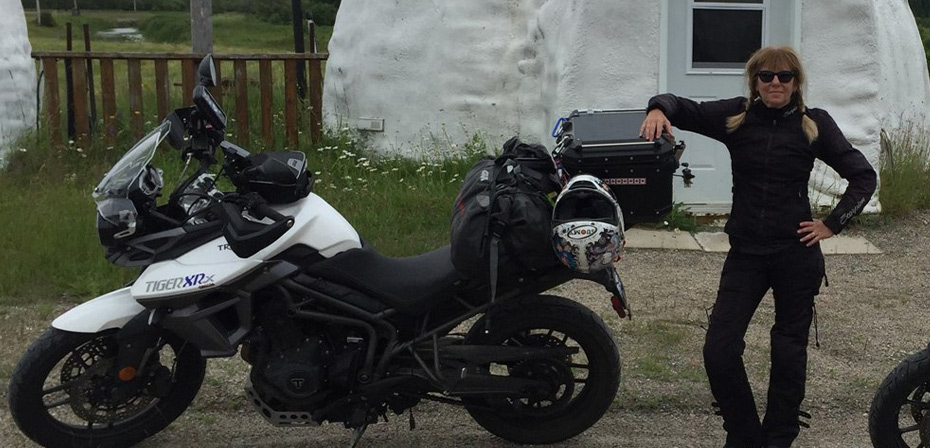This certified Gearing Up instructor gives a few tips on how to adjust an oversized motorcycle to better fit you
Instead of whining about my petite powerless size – trust me, I tried but nobody listened – I decided to turn my greatest asset into articles directed at the new rider with height and strength restrictions, and what that rider needs to know before riding or purchasing a motorcycle. Anyone with this constraint, or a friend of someone with this body type, listen up, huddle around this physical page or social media water cooler and let’s talk.

As a female on this big-boy adventure bike, I feel like an impostor every time I grab the front brake and swing my leg over as I deal with issues related to my height and limited muscle power. Unlike taller and stronger riders who are able to jump on their bikes like hopping into their cars – no fear, no concerns and no issues – I deal with all three at varying degrees with every ride. And if I ignored them, I would either be foolish or dead.
Adjustments for a Better Fit
While most dealerships go over the bells and whistles of your new set of wheels, some forget to ask or make adjustments to better fit you to your motorcycle. If you’ve bought a used bike from a private owner, please ask your more experienced riding friends to help you with these quick customizations.

So on to the basics. Let’s start in a clockwise direction with my left leg or foot. Since almost every bike weighs more than I do, I must match my confidence level to the weight of the bike and the length of my leg. This means, when stopped on a lighter bike, I’m more comfortable with a greater left side lean than on a heavier bike, such as my Tiger. Stopped on her, I prefer a closer-to-centre position, especially when loaded for a long distance ride. Most larger-framed riders may not even consider this, given they can handle the motorcycle with the combination of their leg and arm muscles. Please ignore the common advice “as long as you can get one foot down,” since you also need to consider the weight of the motorcycle in the lean. Lower your motorcycle or buy the appropriate-sized bike to match your height and confidence level.
On the Handlebars

With the help of a friend, position yourself in the rider ready position and straighten your arms, as if preparing for a hard brake, then visualize a straight line from your shoulders to your fingertips. Rotate your levers, one at a time, to achieve this imaginary line. This set-up provides you with the best position to pull the levers all the way to the handlebars. This angle is especially important on your front brake.
Smaller riders may end up with smaller bikes, which typically means smaller mirrors. This forces you to be a little forward-thinking. Without a centre mirror, like in a car, motorcycle riders will always have blind spots, and is one of the reasons for our constant shoulder checks. In these smaller mirrors, we can’t see both rear and side views. With your helper keeping your ride in a centre position, adjust your mirrors while in your rider ready position. Since most vehicles in North America pass on the left, I set my left mirror for what’s coming up behind me on my left side, and the right mirror for what’s directly behind me. Most mirrors get bumped when parked, so make sure you readjust them as part of your safe-to-ride check.
There are other parts of the motorcycle that all riders – small, tall, strong, or not so much – customize to their preference. These traditionally include shifter, rear-brake lever, and some seats and foot pegs. Please check your manual for adjustment instructions.
With these customizations, all short and power-reduced riders can turn themselves into a Popeye-like character and ride the same roads and put on the same kilometres as our Brutus-type friends without revealing our everyday limitations.






















